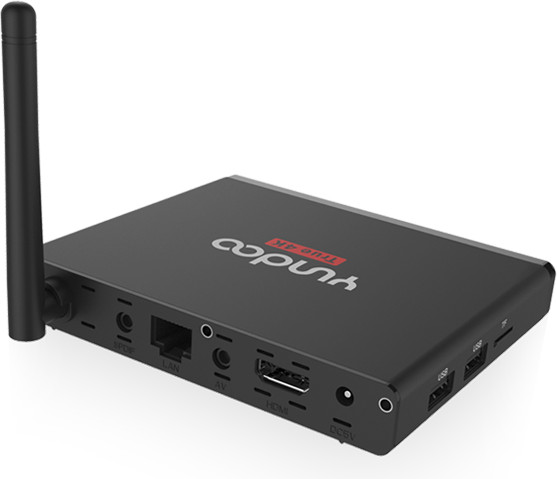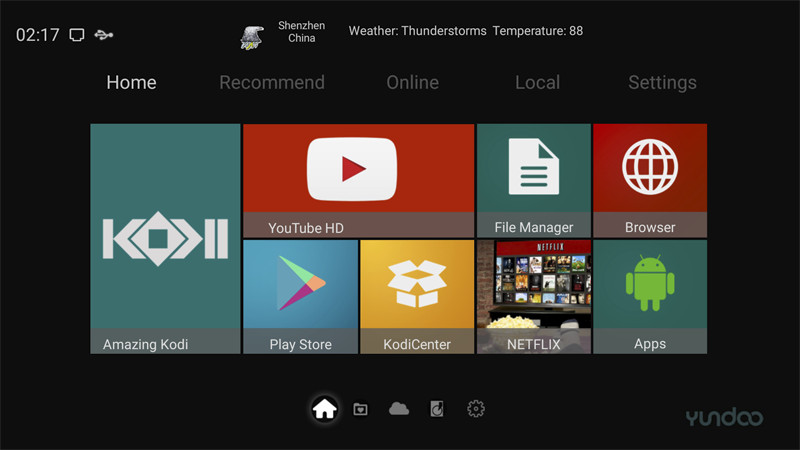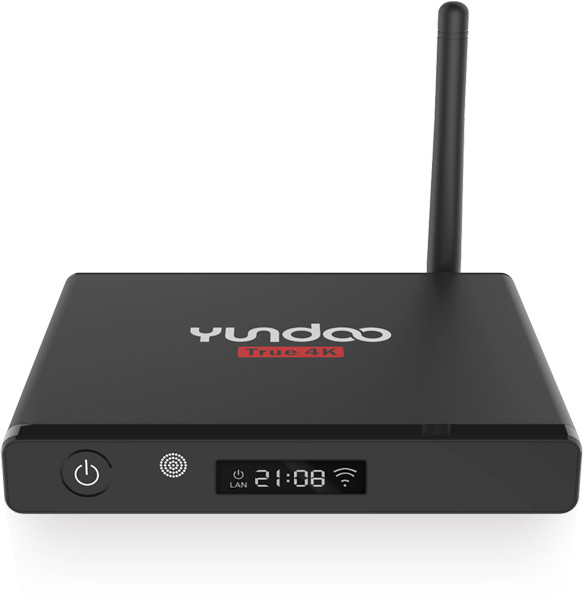Most TV boxes on the market comes with DDR3 memory, but YUNDOO Y7 TV box based on Amlogic S905X processor instead comes with 2GB DDR4 memory, with the company claiming 50% higher bandwidth compared to DDR3 memory.
- SoC – Amlogic S905X quad core Cortex A53 processor @ 1.5 GHz with Penta-core Mali-450MP GPU @ 750MHz+
- System Memory – 2GB DDR4 (bandwidth up to increased 50% compared to DDR3)
- Storage – 16GB eMMC flash + micro SD port
- Video Output – HDMI 2.0 with HDR and CEC support up to 4K2K @ 60 Hz, AV port
- Audio Output – HDMI, AV, and coaxial S/PDIF
- Connectivity – 10/100M Ethernet, dual band WiFi 802.11 b/g/n and Bluetooth 4.0
- USB – 2 x USB 2.0 port
- Misc – Power button, IR receiver, LED screen
- Power Supply – 5V
- Dimensions – TBD (metal housing)
 The device runs Android 6.0, and is said to come with a user interface designed by XPoloV designer team based in the USA.
The device runs Android 6.0, and is said to come with a user interface designed by XPoloV designer team based in the USA.
Which applications will benefit from higher memory bandwidth? I’m not entirely sure, but I’d assume applications moving a lot of data, such as 4K video players and possibly games should benefit from faster memory.

I could not find availability nor price information for the device, but you’ll find some more details on Yundoo Y7 product page. Yundoo and Nexbox brands appear to be managed by the same company. [Update: Yundoo Y7 is up for pre-order on GeekBuying for $57.99 with 2GB+16GB, and $43.99 with 1GB+8GB. Shipping is scheduled for next week (1GB RAM) and next month (2GB RAM)]

Jean-Luc started CNX Software in 2010 as a part-time endeavor, before quitting his job as a software engineering manager, and starting to write daily news, and reviews full time later in 2011.
Support CNX Software! Donate via cryptocurrencies, become a Patron on Patreon, or purchase goods on Amazon or Aliexpress





